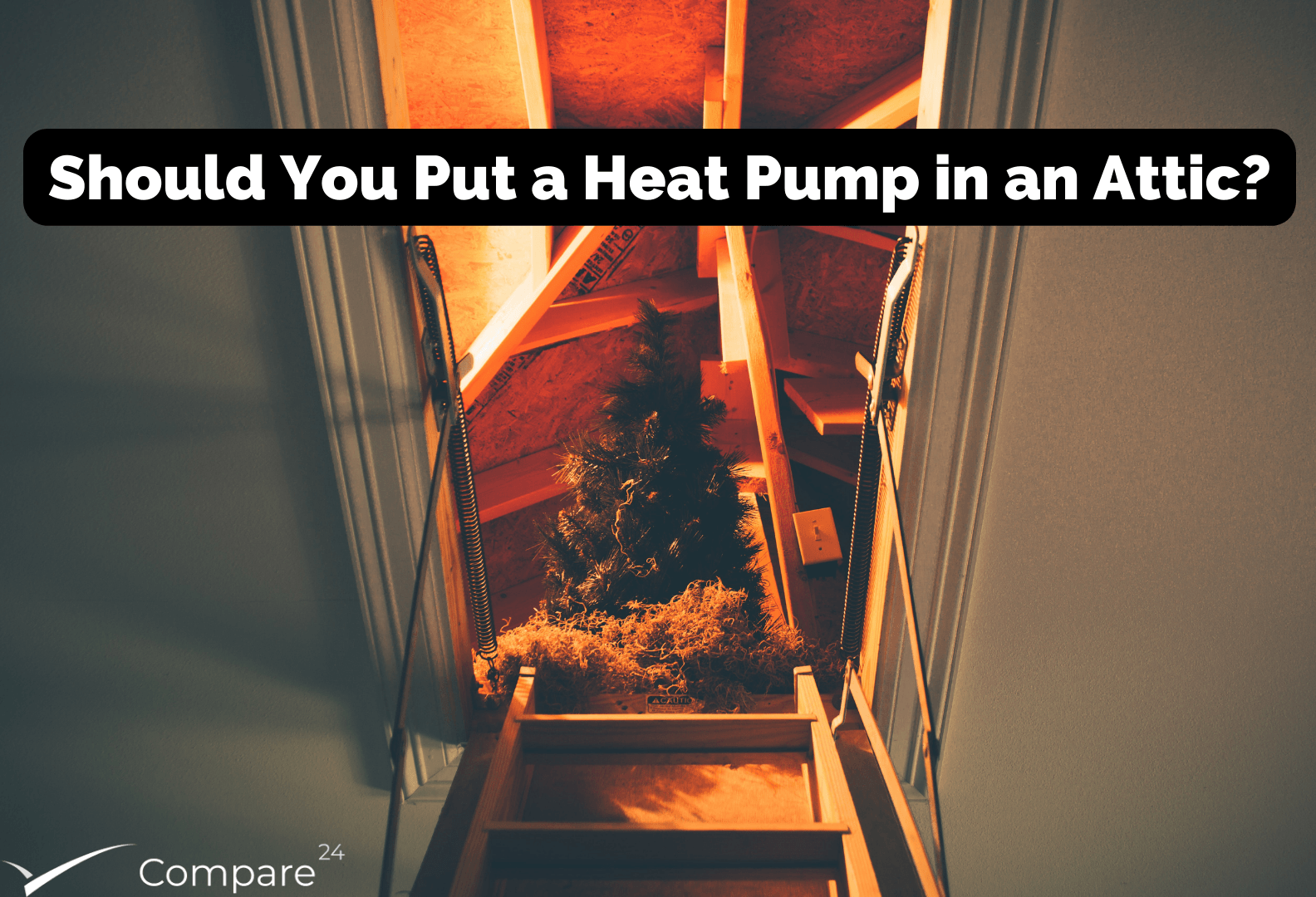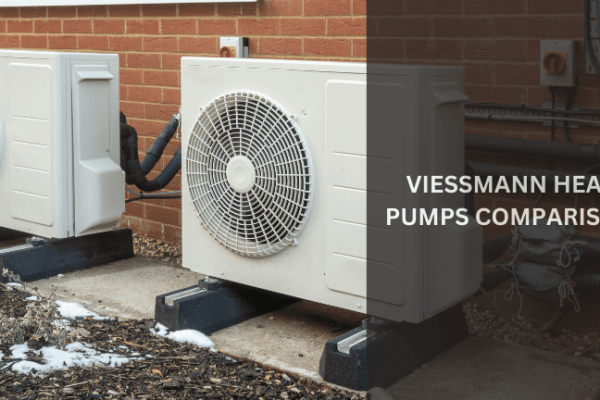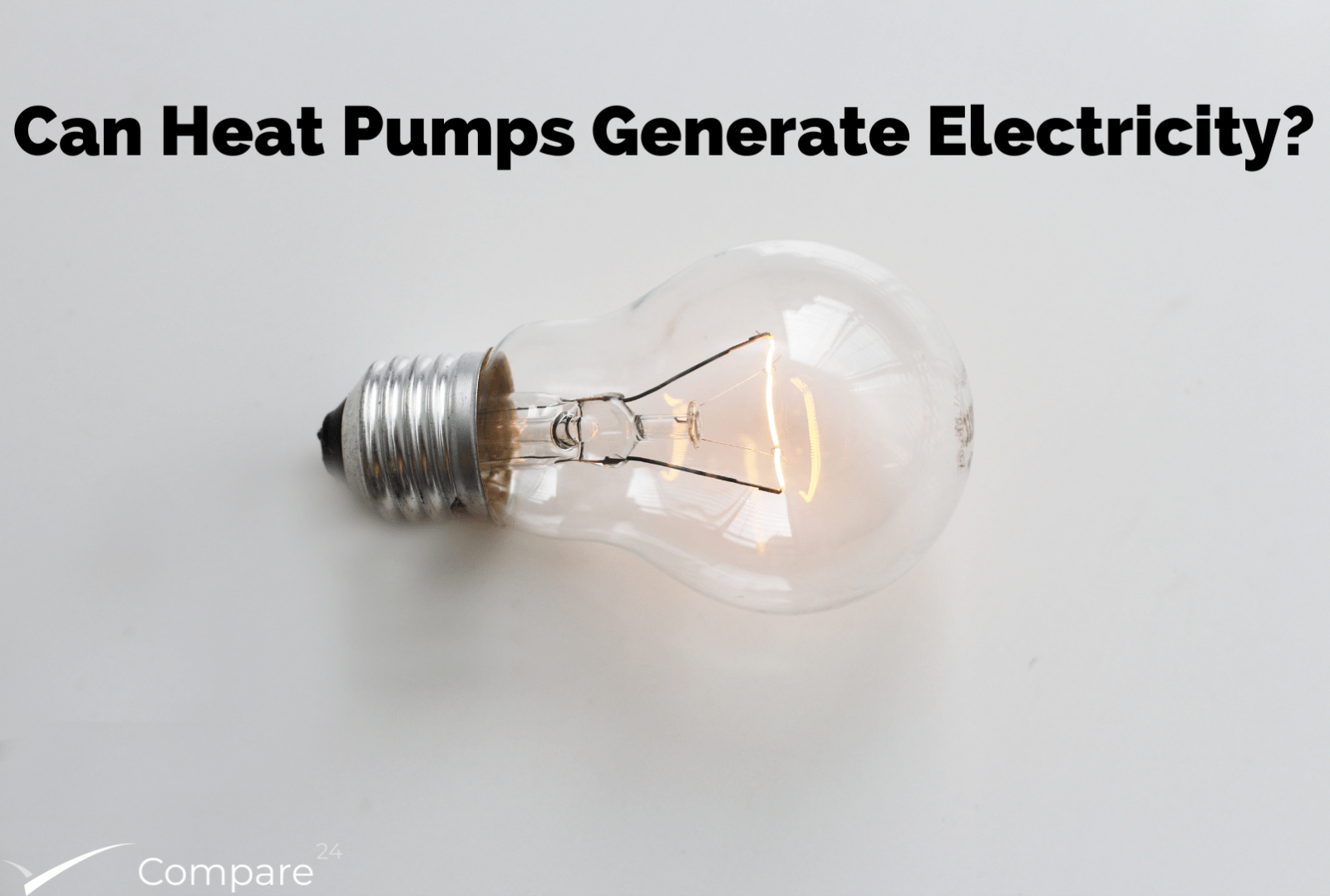If you are planning to install a heat pump in your home, you are probably wondering what is the best location for it. Does a heat pump need to be outside or inside? Can you put a heat pump in the attic? What are the advantages and disadvantages?
In this guide, we’ll go over all the questions you may have about placing your heat pump in the attic, including the advantages and disadvantages.
Can a heat pump be located in the attic?
Yes, a heat pump can be placed in the attic, however, there are various disadvantages that you should consider. It may seem like the perfect option to place a heat pump in the attic because you can easily control the temperature of the floor below, and this proves useful for 2-story houses. Despite the advantages, there are also plenty of things that can go wrong with attic heat pumps.
In order to decide whether or not you should place your heat pump in the attic, we need to consider the advantages and disadvantages.
Advantages of having a heat pump in an attic
Less noise
We all know how noisy HVAC systems can be and a heat pump is no different, for that reason, some homeowners consider placing their heat pump system in the attic. A typical heat pump system will be either located on the wall or in an outdoor area, and it can be noisy at times. One way to avoid this is by placing the heat pump in the attic.
Located out of the way
If you have a small outdoor space, and you want to avoid placing your heat pump on the wall, the attic might be a great solution. The system will remain out of the way, and it can help you save space.
It can be easier to control the temperature in all the rooms of the house
An attic heat pump can also help you to control the temperature, especially if you have a 2-story house. Typically, in this type of house, the heat pump will be located on the ground floor, and to push the air to the first floor, you either have a second system mounted on the wall, or it can consume more energy. Having a heat pump in your attic makes it easier to control the temperature on the first floor, and it can be more efficient.
Disadvantages of having a heat pump in an attic
Difficult to clean and maintain
One of the main disadvantages of placing your heat pump in the attic is that you need to maintain and clean heat pump from time to time. Whether you do this on your own, or you hire a company specialized in heat pump maintenance, you need to consider how difficult the task may be.
Some attics are relatively easy to access and have plenty of space and headroom to be able to clean and care for your heat pump. Others may be a lot more complicated to access, and it can be difficult to maintain and clean your heat pump system.
Rodents can damage your heat pump system
Rodents love attics, and in fact, they are a big threat to your heat pump system. Within a few weeks, they are able to destroy all the pipes in the system and could cause you a lot of trouble, and a hefty repair bill. This is another disadvantage of having your heat pump system installed in the attic.
It is more difficult to check your system
While maintenance and cleaning are important, having a way to check on your heat pump is also crucial. Placing it in the attic means that it will be more difficult to access, and therefore more complicated to check on your heat pump system from time to time.
Lower efficiency
Depending on the structure and architectural layout of your house, a heat pump in the attic could have a lower efficiency. For example, if most of the areas close to the attic are not the most used rooms in the house, it means that you will need additional energy to make the heat or cold air move into the rooms you want to.
For this reason, you need to carefully consider how your house is designed in order to make your heat pump as efficient as possible.
Maintenance can be more expensive
Some attics are difficult to access, and on top of that removing parts of your heat pump in the attic or a simple task like replacing the air filter can be a total nightmare. This is why you have to consider whether or not having the heat pump in the attic is a good option for you. If it is easy to access your attic, then you can consider it otherwise, it might be difficult and expensive to repair any problems that your heat pump may face.
Dustier
Attics are known for being dusty, and dust and heat pumps do not go well together. Especially if one of your family members has allergies, a heat pump placed in a dusty place like an attic can make it easy for the dust to go into the system. Not only spreads dust around the house but also blocks the airways, requiring you to replace the air filter often.
Should you install a heat pump in the attic?
Most of the time you should avoid installing a heat pump in the attic because it can cause more harm than good. However, if you have a high-ceiling attic, with plenty of space, that allows your heating system to easily blow air into the most used rooms of your house, then you should consider it.
Once again, it depends mostly on the layout and design of your house, and you should carefully consider and ponder all the pros and cons of an attic heat pump.
Attic heat pump FAQ
Which type of heat pump can be located in your attic?
An air-source heat pump can be located in the attic since it relies on air to make the system work. Other types of heat pumps, such as water-source and geothermal are not adequate to be located in the attic.
Is a heat pump in the attic a good idea?
While it is generally best to avoid placing your heat pump in the attic, in some cases for 2-story houses it can be a viable solution. Provided that the attic has a high ceiling and accesses the most used rooms of the house. This will ensure that the installed system will be efficient, and will work properly.
Is it better to have a heat pump in the basement or attic?
Placing your heat pump in the basement or attic depends on how your house is constructed and the type of heat pump you are installing. The most common type of heat pump, air-source, should not be located in the basement, because it requires air inflow, and the basement is not the best place for it. Moreover, it can be located in the attic depending on the structure, and layout of your home.
Remember that choosing the right location for your heat pump is totally dependent on the layout of your home.
How does an attic heat pump work?
The type of heat pump that can be installed in an attic is an air-source heat pump. It works by taking air into the system and controlling its temperature with a compressor, which allows the system to either warm or cool the house.




